In September 2008, just weeks before Barack Obama was elected president, True Blood premiered on HBO. Its evocative title sequence, which features Southern-gothic images like rattlesnakes, a child dressed in KKK robes, and a church signboard inscribed with the words "God Hates Fangs," were the first clues viewers had that this was no ordinary vampire soap opera -- this drama might actually have bite.
Throughout its six-year run, the show has fulfilled this promise in its portrayal of a civil rights movement for the supernatural. Vampires of every race and sexual orientation have "come out of the coffin" and demanded social and political equality. Some have done so through savvy media campaigns while others have raised angrier voices, reacting to threats from religious zealots, antivampire politicians, and infected blood.
In the real world, viewers needed only to switch from HBO to CNN to see similar scenes unfolding. From the 2008 passage and 2013 overturning of Proposition 8 and the end of "don't ask, don't tell," to the ongoing HIV and AIDS crisis and the death of Fred Phelps - whose signs reading "God Hates Fags" picketed the funerals of LGBT people - have been among the numerous real-world parallels depicted in True Blood.
Looking back on these parallels between the real and fictional world of the show, Kristin Bauer van Straten, who has portrayed the lesbian vampire Pam De Beaufort since season 1, reflects on how groundbreaking True Blood truly was in its portrayal of characters and stories that staked at the heart of what it means to be a minority in America.
"I always wonder how many people just enjoy the show and how many people see the depth that Alan Ball began," Bauer van Straten says, referring to the show's gay creator. "And for me, that's what gives HBO and the character of Pam in this show a lasting presence."
"Crazy stuff happens in Bon Temps," she adds. "But really, it's nothing crazier than what we deal with in life on earth."
There's been no shortage of crazy stuff in Bon Temps, the fictional Louisiana town where humans and supernatural creatures reluctantly coexist. Vampires, werewolves, witches, werepanthers, fairies, and more have descended upon the locale in recent years, often at odds with one another as well as the conservative natives who view them as monsters.
Bauer van Straten sees the draw that such colorful characters, as portrayed by an attractive cast filled with "eye candy," could have on an audience that is not necessarily pro-LGBT, and how Ball has used that magnetism to help sway hearts and minds.
"How do you get people to see another viewpoint that they are closed to?" Bauer van Straten muses. "Art is a wonderful way to do that. ... I'm sure there's a lot of people who are watching True Blood who are not pro-gay rights, but maybe that opened the door. Maybe it got them to think a little bit."
Throughout the past six seasons, True Blood has introduced viewers to more than simple metaphors of minority groups. From the beginning, the show has incorporated at least 12 out LGBT characters, including Lafayette Reynolds (Nelsan Ellis), a flamboyant chef and psychic medium whose relationship with boyfriend Jesus Velasquez (Kevin Alejandro) is prominently featured in several seasons. Another major LGBT character is Tara Thornton, the bisexual best friend of protagonist Sookie (Anna Paquin), who eventually becomes Pam's lover.
Other characters like the middle-aged vampire-blood donor Eddie Gauthier (Stephen Root), Tara's ex-girlfriend Naomi (Vedette Lim), Sookie's cousin Hadley Hale (Lindsey Haun), vampire rights activist Nan Flanagan (Jessica Tuck), and the former vampire queen of Louisiana Sophie-Anne Leclerq (Evan Rachel Wood), are also portrayed as having same-sex attraction, peppering each season with fresh stories that resonate with their real-life LGBT viewers.
From savvy talking heads to brassy bar owners to closeted religious leaders, the series has showcased numerous gay and lesbian characters from diverse racial and ethnic backgrounds in a record that remains unmatched on TV today. Even straight characters, like Sam Merlotte or Jason Stackhouse, have had love scenes with character of the same sex through dreams or fantasy sequences, speaking to the fluidity of sexual attraction.
While other shows have been hesitant to portray gay villains, presumably for fear of dredging up harmful stereotypes, True Blood has been unafraid to show gay men baring fangs. Russell Edgington, played with sinister refinement by gay actor Denis O'Hare, is described by Bauer van Straten as one of the show's most compelling antagonists, not because he was wicked, but because he was a fully fleshed-out character. In fact, his motivations are largely attributed to the grief he felt over the death of his partner Talbot, whom he loved.

"He didn't play evil, he played thoughtful," Bauer van Straten says. "And the dialogue supported that. He said, 'Are you kidding me? Vampires are doing what human beings have been doing to each other for centuries.' He had an intellectual view of supporting his villainy. And I thought it was delicious."
The character of Steve Newlin, a Christian zealot in the vein of Pat Robertson, was another antagonist out for the blood of vampires and their lovers, who are known in the series as "fangbangers." But his evolution throughout the seasons, from zealot to closeted gay man to out and proud vampire, exemplifies for Bauer van Straten one of the keys to True Blood's success: its ability to impart humanity, and occasionally sympathy, to its monsters.
"The characters are many shades of good to evil," Bauer van Straten says. "Nobody is really black or white. We've had a couple really great villains. But even the Denis O'Hare character loved one person and was good to one person. Everyone has one redeeming quality, much like the real world. Life is not so simple and clear."
These blurred lines have not always existed in American media. Section II of the now-defunct Hollywood Production Code outlawed the depiction of homosexuality until the latter half of the 20th century. Before this point, cinema would swap in monsters like vampires as representations for gay men and women, says KP Pepe, the director of programming of Outfest, one of the world's most prominent LGBT film festivals.
Almost invariably, these characters would meet with an unfortunate end, "a punishment to set this moral compass for people," she says, pointing to such films from this year's Outfest lineup like Lyle, Jamie Marks Is Dead, and the shorts in the series Scared Stiff as evidence of the lasting bond between LGBTs and their identification with the horror genre. What True Blood has accomplished is the de-closeting of these characters from cinema history, she says. The fact that some have remained slightly monstrous has raised controversy among LGBT audiences.
"There's been a little bit of fear in the gay community about us not being seen as villains and having this free very mainstream, squeaky-clean image that Bill the vampire is trying to do in the first couple of seasons," Pepe says, referring to a fanged major character that makes efforts to blend into society rather than rebel against it. "But the gay community is more complicated than that. And that's what True Blood is giving to us. It's showing us both sides of things."
Pepe stresses how the show continues to hold a significant place in the lives of LGBT viewers, serving as a reason to congregate at a friend's house each Sunday "to watch this show together and to laugh and yell at the TV, and bet on who's gonna win each fight." From the beginning, she has recognized "the wink, the nod" being sent from the writers to their gay audience that has only grown more prominent with each season.
"We relate to being the underdog," she says. "In 2008, when that show came on, there was so much horrible homophobia in [California]. It felt very empowering to watch the show. ... And as these rights have been won state by state, they seem to be broadening what their impact is, and having fun playing with the high and low camp, that they tend to do, in a way that is really overt."
GLAAD, a national authority on LGBT media representation, has applauded True Blood's growing volume of minority voices, honoring HBO with three nominations for its prestigious GLAAD Media Awards. The show won Outstanding Drama Series in 2011 for its ability to tell LGBT stories in a "fresh new way," says Max Gouttebroze, GLAAD's entertainment media strategist.
"True Blood's fantastic, allegorical premise allowed it to tell stories about prejudice and acceptance in a fresh new way," Gouttebroze said. "Yet over its seven seasons the series also went the extra mile by including many gay, lesbian, and bisexual characters who were just as diverse, dangerous, and memorable as Bon Temps' other residents."
As a major queer character since the first season, Bauer van Straten has been overwhelmed by the reaction from LGBT viewers to her character, a sharp-witted, fiercely dressed, no-apologies lesbian whose life began more than a century ago as the madam of a San Francisco brothel. The character's cutting one-liners, like "I am so sick of Sookie and her precious fairy vagina and her unbelievably stupid name" (a favorite of Bauer van Straten's), have established Pam as a favorite among the queer community, which celebrates her sass and brass. As a result of her positive portrayal, she has been invited to engage in a number of LGBT charitable efforts, ranging from cohosting drag bingo at Hamburger Mary's in Los Angeles to speaking engagements organized by the Human Rights Campaign.
"I think I cried through the whole thing," Bauer van Straten remembers about the HRC event, "because people were so intensely sweet and really just felt like Pam was a good representation. I'm mainly coming from the perspective [where] I'm given the dialogue written by other people and I'm dressed by other people, and I step into those shoes and it's a real collaborative effort to create this character. To then find out that there's this other wonderful side to it, where I've actually contributed to happiness for people, is the greatest joy. Not only do I get to be Pam and make a living and have so much fun on the set, there's this other side to it that's pretty amazing."
Women have taken note of her fierce portrayal, telling Bauer van Straten on more than one occasion, "It's so nice to see a lesbian character who's a snappy dresser." (Lesbians are simply in love with Pam and Tara, confirms Pepe.)
The trailer for the upcoming and final season of True Blood, which features dialogue and imagery that conjures the terrible aftermath of Hurricane Katrina, demonstrates that the show will continue to tackle social and political issues -- in this instance, the capability of a government to abandon a minority in its hour of need.
"We're playing heavy fiction, and True Blood is over-the-top," Bauer van Straten says. "But ... is it really? Because we just saw a part of the country abandoned and left to their own survival not that long ago."
"It's not far off," she concludes. "In fact, it's not off at all. It's what we're dealing with."
The last season of True Blood premieres Sunday at 9 p.m. Eastern. Watch the trailer below.


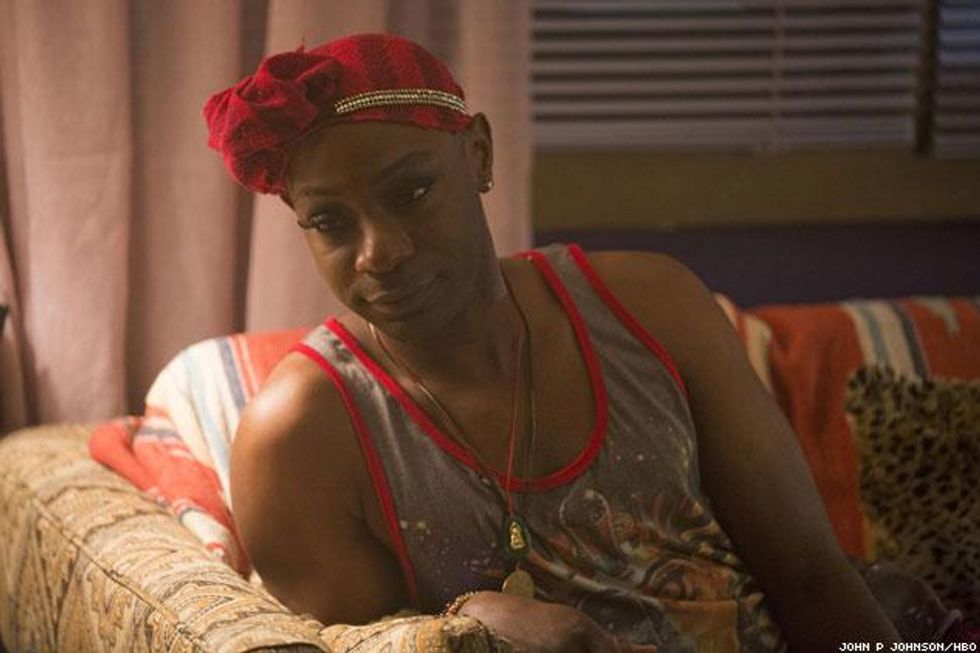






























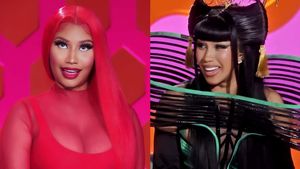



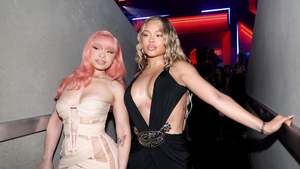













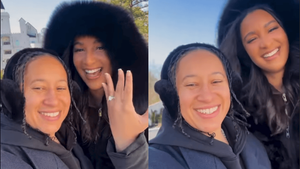


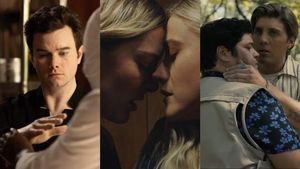
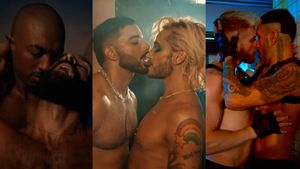








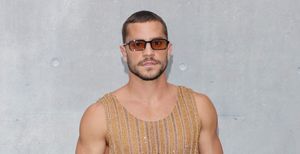


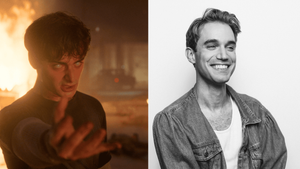

Charlie Kirk DID say stoning gay people was the 'perfect law' — and these other heinous quotes